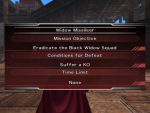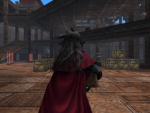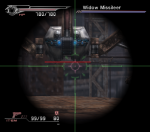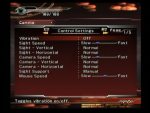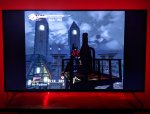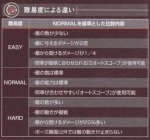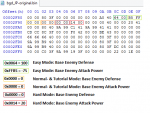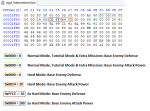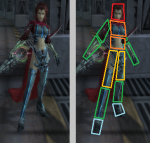Shademp
420
Thread Page 50!
McDirge is not yet sophisticated enough to save me time on changing the final equipment, neither on emulator nor on console. In lieu of that you learn to get really quick at defeating Omega Weiss. It's no more than five minutes each time playing through the last checkpoint, depending on how random the Crystal Feelers are.
My JP International savefile was lacking the Guard N Barrel though and thanks to McDirge I could import that item and lots of gil to my file. That process took 10 minutes rather than the 2-3 hours it would have taken me to replay the game from Chapter 6 (where the Guard N Barrel is found) and onwards. The ultimate dream is to have a perfected version of McDirge available as homebrew on Free McBoot and for the user to be able to select the program from the boot-up screen. That dream is still years away from becoming a reality though. McDirge on an actual PS2 is definitely something that the Extra Missions category is in need of.
The no-brainer equipment for an All Extra Missions run is definitely Materia Floater + Manasoul + Thunder Materia on at least one weapon slot, probably with Ultima Weapon + Nova L Barrel to complete that slot. Deciding on the remaining two weapon slots will require plenty more thought and analysis for maximized timesave. Hopefully, as I play through the missions, it will become clear which setup is to be preferred.
On emulator I can take all the time I need to change equipment while playing the actual mission. Strategies are tested on emulator to calculate efficiency of small segments. Getting a good final time only matters on console at this point. Though if I ever want to make tool-assisted speedruns then I will definitely want a better version of McDirge available to save me time on changing starting equipment before a mission.
McDirge is not yet sophisticated enough to save me time on changing the final equipment, neither on emulator nor on console. In lieu of that you learn to get really quick at defeating Omega Weiss. It's no more than five minutes each time playing through the last checkpoint, depending on how random the Crystal Feelers are.
My JP International savefile was lacking the Guard N Barrel though and thanks to McDirge I could import that item and lots of gil to my file. That process took 10 minutes rather than the 2-3 hours it would have taken me to replay the game from Chapter 6 (where the Guard N Barrel is found) and onwards. The ultimate dream is to have a perfected version of McDirge available as homebrew on Free McBoot and for the user to be able to select the program from the boot-up screen. That dream is still years away from becoming a reality though. McDirge on an actual PS2 is definitely something that the Extra Missions category is in need of.
The no-brainer equipment for an All Extra Missions run is definitely Materia Floater + Manasoul + Thunder Materia on at least one weapon slot, probably with Ultima Weapon + Nova L Barrel to complete that slot. Deciding on the remaining two weapon slots will require plenty more thought and analysis for maximized timesave. Hopefully, as I play through the missions, it will become clear which setup is to be preferred.
On emulator I can take all the time I need to change equipment while playing the actual mission. Strategies are tested on emulator to calculate efficiency of small segments. Getting a good final time only matters on console at this point. Though if I ever want to make tool-assisted speedruns then I will definitely want a better version of McDirge available to save me time on changing starting equipment before a mission.
Last edited:



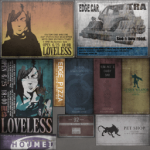
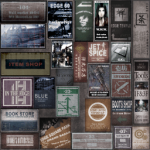




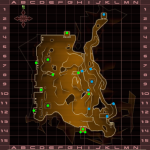
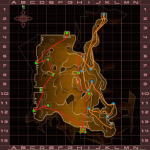
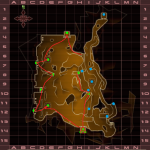




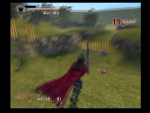


 And what will matter in the end is the RTA measurement.
And what will matter in the end is the RTA measurement.